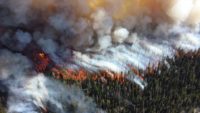Legislation Introduced to Strengthen Cockpit Security

The Saracini Enhanced Aviation Safety Act of 2019 [H.R. 911] mandates inexpensive, lightweight wire-mesh gates to be installed on existing aircraft between the passenger cabin and the cockpit door that would block access to the flight deck whenever the cockpit door is opened during flight.
The legislation is named in honor of Captain Victor J. Saracini, who was killed after his plane was hijacked and deliberately flown into the South Tower of the World Trade Center on September 11, 2001. His widow, Ellen, has become a national advocate for aviation safety following the 9/11 attacks.
“It is unacceptable that, more than 17 years after terrorists breached the cockpit of my husband’s airplane on September 11, 2001, our skies are still susceptible to repeat this act of terrorism. It is my mission to ensure we are doing everything we can to protect the flight deck aboard our nation’s airliners because, without secondary barriers, we are just as vulnerable today as we were on that fateful day,” said Saracini. “We need to call on the FAA to act swiftly on legislation passed last congress to implement a secondary barrier on newly manufactured aircraft for delivery. I’m pleased that a bipartisan group of leaders in the 116th Congress are wasting no time to address retrofitting the remaining aircraft with secondary barriers and continue protecting all who travel in the skies above us.”
Despite measurable improvements in global aviation safety in 9/11, the threat of hijacking still remains. A study commissioned by the Federal Aviation Administration and industry stakeholders concluded the vulnerability of the flight deck is real during door transition and that secondary barriers are safe, cost-effective ($5,000-$12,000 per aircraft), and the most efficient way to protect the cockpit.
Congressman Fitzpatrick previously introduced similar legislation, the Saracini Aviation Act. Elements of its language were included in the FAA Reauthorization Act of 2018 as an amendment and signed into law. That amendment required all new manufactured aircraft to install a secondary barrier. The Saracini Enhanced Aviation Safety Act would require all existing aircraft to retrofit a secondary barrier so that current aircraft fleets are held to the same standard of safety as newly manufactured aircraft.
Looking for a reprint of this article?
From high-res PDFs to custom plaques, order your copy today!






